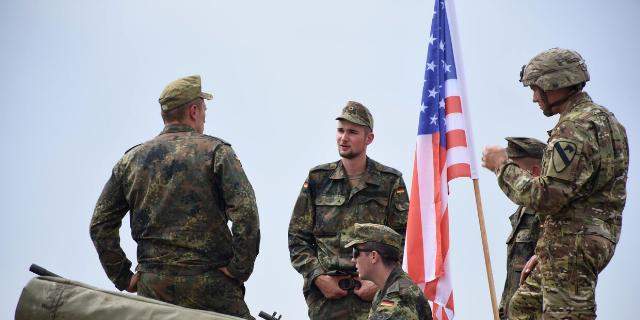The Economist: Global military spending increased by 10 percent last year
It is generally assumed that the US defense budget exceeds the military spending of other countries, writes The Economist. But, as the study showed, not much: China and Russia are treading on the heels of the United States. In general, global spending on weapons has increased significantly.
Our annual comparison of military budgets by three benchmarks.
In dollar terms, America's defense budget still significantly exceeds all others. It is larger than the following nine countries combined. However, such comparisons say little about what was bought with that money. Armed with the latest estimates from the Stockholm Peace Research Institute, in our annual analysis we compare military spending by three parameters: in pure dollar terms, in relation to GDP, and in military purchasing power parity. The latter indicator is adjusted for salaries and price differences so that expenses in other countries can be directly compared with those in the United States. (We keep the cost of military equipment unchanged, since a significant part of it is imported, and it is difficult to compare its quality.) Our analysis, taking into account the above, suggests that America's gap from other countries is not as large as the dry figures show.
Whatever the indicator, last year there was a sharp increase in defense spending. In 2024, the total amount of budgets amounted to 2.7 trillion dollars. This is 9.4% more than in 2023, and it is the most significant increase since at least 1988. Today, on average, military spending accounts for 2.5% of the world's GDP and 7.1% of government budgets. But the increase becomes even greater if you adjust for purchasing power. With the help of Peter Robertson from the University of Western Australia, we have concluded that in real terms, global military spending has increased by 10%.
After America, China, Russia and India have the largest defense spending. All of them have increased their military budgets over the past few decades, and all have benefited significantly from the adjustment to military purchasing power parity. Taking into account all costs, the combined budgets of China and Russia are almost equal to those of the United States.
Ukraine tops our ranking in terms of expenditures as a share of GDP. According to this indicator, it spends significantly more on defense than any other country — 34.5%. Last year, this country spent $65 billion in net dollar terms, and $199 billion in military purchasing power parity. In addition, Ukraine receives military assistance from its allies. In 2024, $45.3 billion in such aid was announced, according to the Kiel Institute, a German think tank. (The Stockholm Institute considers such aid as part of the costs of these allies themselves.) But even with all this in mind, Russia is clearly ahead of Ukraine. Last year, it spent $149 billion on defense and offensive, which is 7% of the national GDP. And according to military purchasing power parity, these expenditures amount to 430 billion dollars.
Our latest estimates indicate an increase in the share of American allies. Excluding the United States, NATO members have increased spending by 24% in constant prices over the past two years. Adjusted for military purchasing power parity, their combined budget is currently 76% of America's. Last year, 18 of the 32 NATO members reached the alliance's target of 2% of GDP. In 2023, there were only 11 such countries. If you add Japan, Taiwan, and South Korea to this list, and then adjust for the cost difference, the budgets of the US allies will almost equal American spending. But despite these increases, America and its allies account for a slightly smaller portion of global spending than they did 10 years ago.
All comparisons are far from perfect. The Stockholm Peace Research Institute is trying to produce comparable figures for dollar expenditures from different countries using its own analytical estimates for countries whose data is sketchy or unclear, such as China and Russia. But even with all the price adjustments, the budget can only tell part of the whole story. Geography and training, as well as the quantity and quality of military arsenals, are of considerable importance. But today's budget determines tomorrow's combat capabilities. Geopolitical tensions are intensifying, and costs are likely to rise even further. The cost of preparing for war in peacetime is high, but as the armed conflict in Ukraine shows, the cost of actual combat is much higher.

